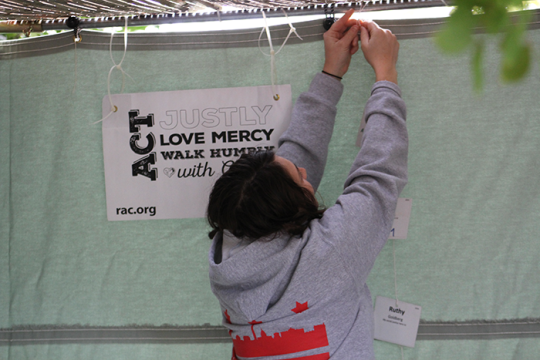
I grew up in a family that was all about making Jewish ritual our own, and there was no greater holiday for our collective creativity than Passover. My mom has laminated the sheet music for “Behold it is the Springtide of the Year,” which we pull from our mid and burst into an attempt at four-part harmony. When I was very young, I started calling my dad “Feather.” So, in homage to the ritual of sweeping away crumbs with a candle and a bird’s feather, we would hand him the last box of bread products to squirrel away in the basement. Cleaning for Passover with a Feather! In recent years, our family has grown to include my sisters-in-law, who are not Jewish. To honor the diverse cultural backgrounds at the table, we’ve added a bowl of nuts, chocolate, and dried fruit called “Ruth’s Mix” to the seder plate.
But my favorite Passover innovation is the burning of our “emotional chameitz.” Many Jews choose to burn their last crumbs of chameitz to signal that everything is ready for the holiday. Many years ago, I heard about a parallel ritual to clean out the corners of our hearts before Passover. I introduced it to my family, and it stuck. At the beginning of our seder, we pass around slips of paper and pens. Everyone at the table is invited to write down their “emotional chameitz,” the crumbs and remnants of the past year that they’d like to sweep away. No one has to read their chameitz out loud. This allows everyone to really reflect on what they’d like to burn away. We pass around a large fire-safe bowl, everyone drops in their paper, and we set the papers on fire. There’s something viscerally satisfying about watching what you’ve written burn away, and we start our Passover celebration feeling a little more free.
Want to give this ritual a try this year? If you’re nervous about fire safety, not to worry! Scroll down for ideas to adapt the ritual without a flame.
What you’ll need:
- A fire-safe bowl or container (either something metal or something you would be able to safely put in the oven)
- Slips of paper for each person to write down their reflections
- Writing utensils
- A long-stemmed match or lighter
- Explain to those gathered the meaning behind the burning of chameitz. Share excerpts from this article or add your own ideas.
- Pass out slips of paper and writing utensils and invite everyone present to write down a few words or sentences about the spiritual chameitz that they want to sweep away this year.
- No one is required to share what they’ve written – as you pass the fire-safe container around the table, invite guests to fold up their paper and add it to the bowl. If anyone would like to share what they’ve written, they’re welcome to.
- When everyone’s papers have been added to the container, some may choose to add a prayer or intention before symbolically destroying the chameitz:
As we rid ourselves of our spiritual chameitz, may we feel all that we have been holding in our hearts, all that no longer serves us, the crumbs of past hurts we no longer need, burn away. Just as fire in the forest clears room for new growth, may the fire we kindle now open us to the freedom that is built from an open heart and an open horizon.
Add any other intentions or prayers you choose
- Choose a responsible adult to light the match and set the bowl’s contents aflame in a safe area. Have a glass of water on hand to extinguish the flames if needed. If the weather is nice, this is a great activity to do outside! Children should not hold the matches or container once the fire is lit.
Not about to set a fire at your Seder? Not to worry! There are plenty of creative ways to adapt this ritual without literally burning your emotional chameitz. If you like the idea of writing on paper, you can still do so, but dispose of it differently. Fill your bowl with water and red food coloring as a symbolic flame or decorate a box with construction paper flames and close it up. Love the themes of growth and spring that comes at this time of year? Find compostable paper or seed paper and have everyone bury their emotional chameitz in a bowl of soil.
Short on pens and paper? You can also lead your guests in a meditative version of this ritual, no writing required! Download our meditation. Interested in more creative rituals for your Passover celebration? Download our Passover Activity Book and let the fun continue!
Related Posts

Teens Make Their Voices Heard by Voting

